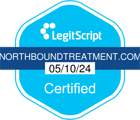What Is Methamphetamine?
Methamphetamine is a stimulant drug that comes as a powder or a pill.1 It is available by prescription to help treat ADHD as well as obesity, but other forms, like crystal methamphetamine, are illegal.
Methamphetamine is known by many names. By prescription, it’s known as Desoxyn. On the street, it may be known as:
- Speed
- Ice
- Shards
- Stove Top
- Crystal
- Yaba
- Trash
- Tweak
- Meth
- Bikers Coffee
- Crank
- Shabu

How Is Methamphetamine Used?
Illicitly, meth is taken as a powder or pill by injection, snorting, or smoking. To make the effects stronger, those who use methamphetamine may take higher doses, take it more often, or change how they take it.
Desoxyn2, or the prescription form of methamphetamine, is used to treat Attention Deficit Hyperactivity Disorder and obesity. It only comes in a tablet form and is given at the lowest effective dosage to avoid addiction-related issues. For example, the dosage for obesity begins at 5 mg a half-hour prior to each meal. For ADHD, the normal effective dose is between 20 and 25 mg daily.
Why Is Methamphetamine Addictive?
Methamphetamine is addictive because of how powerful it is. It’s almost immediately habit-forming in most people. Each time a person takes a hit, the brain suffers damage. When it’s damaged, those receptors no longer have the ability to feel pleasure without methamphetamine present.
Upon the first hit, the brain immediately releases dopamine in high quantities. Dopamine produces feel-good sensations and a feeling of satisfaction. By releasing more dopamine than is normal, methamphetamine slowly damages the brain over time. Meth is then needed to feel any kind of pleasure, which makes those who use it dependent on the substance for those sensations.
While treatment can bring back at least some of the brain function that has been affected, there is a risk of permanent cognitive impairment when methamphetamine is used often.

How Does Meth Affect the Body?
When meth enters the body, it triggers the release of dopamine. This is a naturally occurring chemical in the brain that produces:
- Feelings of pleasure
- Attentiveness
- Support for learning
- Support for movement
Dopamine is usually regulated by the brain, but meth overtakes that process and causes large amounts to be released at once. Tolerance to the drug builds quickly, and further use is the result.
It has been shown, that the gray matter volume of the brain in the frontal lobe is negatively affected by methamphetamine.3 Other areas of the brain that are affected may include the limbic regions, inferior parietal lobule, temporal lobe, and limbic regions. This is important because the gray matter of the brain contains neurons to store information, capillaries to provide blood and oxygen as well as glial cells to feed the neurons.
Using methamphetamine impacts the ability of the brain to be “elastic,” which means that it may have a more difficult time adapting to new experiences.
In the body, physical symptoms of meth use may include:
- Anxiety
- Paranoia
- Convulsions
- Stroke
- Cardiovascular collapse
- Signs of addiction
- Increased heart rate
- High blood pressure
What Are the Signs and Symptoms of Meth Addiction?
Some signs and symptoms of meth addiction include:
- Sudden weight loss, since methamphetamine shuts down the brain’s ability to sense hunger
- Dehydration
- Sleep deprivation/insomnia
- Skin abscesses
- Decreased libido
- Osteoporosis
- High body temperature
- Behavior changes (severe paranoia, mood swings, aggressive behavior)
- Hallucinations
- Impulsive, risk-taking behavior
What Is Anhedonia?
Anhedonia is the inability to feel pleasure. This may include being unable to feel pleasure during enjoyable hobbies or sexual activities, for example. This symptom of methamphetamine usage is caused by the damage to the dopamine receptors in the brain.
Anhedonia is a mood disorder, so it can be treated. Exercising, getting good nutrition and potentially using medications that boost dopamine production4 could help treat this condition and get it under control.
What Is Psychosis?
The term psychosis5 is used to describe a condition of the mind where a person loses touch with reality. The person’s thoughts and perceptions may be altered, so the individual may not know what is real and what is not. They may have delusions, audible hallucinations, or visual hallucinations.
In one study6, it was shown that 56 people who had been abstinent from methamphetamine but were previously addicted shown signs of psychosis throughout their withdrawal period. The symptom did pass.
What Treatments Are Used for Meth Addiction?
There are many treatment methods available for those who misuse methamphetamine. The first step for any patient is to go through detoxification. After that, behavioral therapies are used most often.
What Should You Expect During Methamphetamine Detoxification?<
The point of detoxification is to support clients as they detox from methamphetamine. The goal of any detox program is to minimize the signs of withdrawal and to help patients move through detox without relapsing.
The timeline for withdrawal varies by person, but most people will see a crash period within 24 to 48 hours after taking the drug for the last time. Between days three and 10, the body begins to adjust to living without methamphetamine but triggers the worst of the withdrawal symptoms.
During days 14 to 20, clients then see the symptoms subside. They may start or already be in a treatment program at this stage.
Finally, a month or longer after the last dose, patients may have minimal symptoms of addiction, though some may remain.
What Are the Symptoms of Meth Withdrawal
Methamphetamine withdrawal has some symptoms that are typical among all users. These may include:
- Stomach aches
- Anxiety
- Depression
- Fatigue
- Increased appetite
- Insomnia
- Excessive sweating
- Paranoia
- Fever
- Red, itchy eyes
- Loss of motivation
- Nausea
- Dehydration
- Tremor
- Suicidal thoughts
- Confusion
During the first 48 hours, those going through withdrawal can expect a sharp decline in their ability to think clearly. They may begin to sweat and have significant abdominal cramps.
After this, days three through 10 are the most significant in terms of detoxification. The withdrawal symptoms peak and cause anything from severe fatigue to depression, anxiety, shaking, muscle aches, or other side effects. Most patients have intense cravings during this period.
Between 14 and 20 days after the last dosage of meth, most people see the physical symptoms of withdrawal subside. They may still have drug cravings, depression due to anhedonia, and fatigue. It’s during this time that most people will begin a rehabilitation program, so they can start making changes to help them overcome the remaining symptoms as well as cravings that may persist well into the future.
What Are the Symptoms of a Meth Overdose?
Methamphetamine is a strong stimulant, and as such, an overdose is very serious. Taking too much methamphetamine may result in an acute overdose or chronic overdose. Interestingly, an acute overdose happens only when someone takes the drug by accident or in large quantities intentionally. This has the potential to be life-threatening.
Someone with a chronic overdose doesn’t necessarily have life-threatening symptoms, but they are suffering from the long-term health effects of using methamphetamine.
The symptoms of an acute overdose on meth include:
- Having an extremely high body temperature
- Paranoia
- Seizures
- Chest pain
- Unresponsiveness
- Coma
- Stopped heart
- Irregular heartbeat
- Trouble breathing
- Kidney damage
- Kidney failure
- Severe pain in the stomach
- Stroke
- Agitation
Long-term overdoses may cause symptoms such as:
- Major mood swings
- Paranoia
- Delusional behavior
- Insomnia
- Missing/rotted teeth
- Severe weight loss
- Abscesses or boils on the skin
- Repeated infections
If someone is showing signs of a methamphetamine overdose, they need emergency medical care as soon as possible. Those who are extremely paranoid, aggressive or excited could be a danger to themselves or others. Call for emergency help. If they stop breathing, it’s appropriate to begin emergency cardiopulmonary resuscitation. If they’re having a seizure, gently hold the back of the head to prevent injuries but do not attempt to pin them down.
In the emergency room, activated charcoal or laxatives are used to remove methamphetamine from the body. Breathing support may be needed in some cases, as well as a toxicology screening. Every case is different, but there will be support based on the symptoms the patient presents.

Contact Northbound Treatment for Support With Meth Addiction
If you or a loved one are struggling with an addiction to methamphetamine, it’s important to get support as soon as possible. Here at Northbound Treatment, we’re focused on helping patients get through detoxification and recovery so that they can get back to the lives they love. We offer a variety of services such as drug and alcohol detox, intensive outpatient, and residential rehab. Everyone is different, but we have programs that suit people in all kinds of situations. Call today to learn more about the program that may be right for you or your loved one.
Sources:
1United States Drug Enforcement Administration. Methamphetamine
2RXList.com. Desoxyn
3The Radiological Society of North America. (2015). Sex Differences in Gray Matter Changes and Brain-Behavior Relationships in patients with Stimulant Dependence
4National Library of Medicine and the National Institute of Health. 2019. Pharmacological interventions targeting anhedonia in patients with major depressive disorder: A systematic review
5National Institute of Mental Health. What Is Psychosis?
6US National Library of Medicine and the National Institutes of Health. 2010. Withdrawal symptoms in abstinent methamphetamine-dependent subjects





